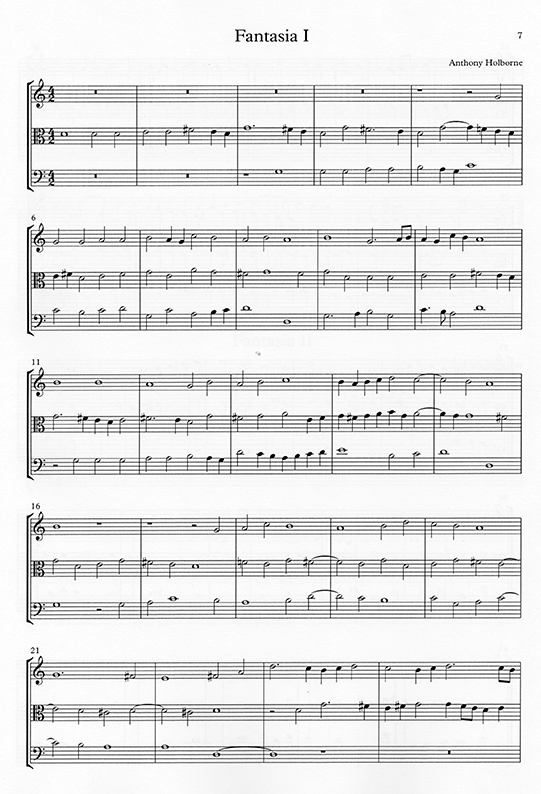Viol Consort Editions


Sample pages havebeen provided from each edition. These are copyright, and are not necessarily indicative of the standard of difficulty of the whole edition.
Please also see the Print on Demand page for more viol ensemble pieces.
Some audio samples have been added to this page.
Prices on this page do not include Australian GST. Australian residents please add 10%.
Two pleasant madrigalesque fantasies from the 17th century, originally found in British Library mss. Intermediate level consorts for TrTrT viols. Good fun. 3 scores.
Four pieces for TrTrTB viols featuring Byrd's Ave verum corpus and Ego sum panis vivus, Merulo's L'amorosa ero and an arrangement of a keyboard work by Sweelinck: Mein junges Leben hat ein End'. The last work is fairly virtuosic, but the others are not so difficult. Text given for the top line of the works of vocal origin, so could be performed with a singer and viols. Score and parts.
These two early fantasies probably date from around 1620, and are scored for TrTrTTB viols and organ. The organ is an independent part. Score and parts, with full critical commentary. Gorgeous slow pieces with wonderful harmonies.
These two madrigals: Vezzosi augelli and L'amorosa ero are scored for TrTrTB viols, and come complete with text so the top part could be sung with viols. Score and parts. Very pretty music by a master composer. An alternative tenor viol part is provided for Vezzosi augelli to make it TrTTB.
This great three part piece is presented here in the ultimate flexible edition. The original TrTB scoring, plus an alternative part so you can play TTB, and a transposition allowing 3 bass viols to play it. Score and parts, plus critical commentary.
A fantastic madrigal, arranged for TrTrTB viols. Full text provided, with score and parts. Gorgeous harmonies, and not too difficult. Could be performed with a singer and viols.
Two pieces arranged for four viols: TrTBB/TrTrTB. The first is The Lord of Salisbury His Pavan, a keyboard piece, while the second is a well-known madrigal by John Bennett: Weep O mine eyes. Both quote Dowland's famous Lachrimae theme. Score and parts.
A Sad Paven for These Distracted Tymes (1649) was a keyboard piece written two weeks after the beheading of Charles II of England, and it is arranged here for TrTrTB/TrTTB viols. The companion piece is a funeral anthem: I heard a Voice, which comes from Tomkins' Musica deo Sacra, a posthumous publication in 1668. Score and parts
This is an arrangement for TrTrTTB viols of Whyte's setting of Psalm 15. It is a beautiful but melancholy work, and full text is included, allowing performance with one or more singers. Score and parts.
Two beautiful pieces by Handl, arr. for TrTrTB viols. Ecce quomodo is fairly homophonic and quite an easy piece. Recessit pastor noster is a little more polyphonic. Both pieces are very suitable for performance in church, perhaps between verse anthems, and could also be performed with a singer and viols. Texts included. Score and parts.
This is a (slightly) graded set of 14 very easy pieces for four viols, and includes such favourites as Coventry Carol, Es ist ein Ros, Bonny sweet Robin, La Folia, Il Spagnoletto and Martin said to his Man. Some of the later pieces in the book include a few challenges, but otherwise the part writing is very simple - four crotchets to a bar in many cases.
The presentation is four scores so that everyone can see all the parts. Excellent for use at workshops for lower intermediate groups, or for beginner viol consorts at home.
This collection of ten pieces for treble, tenor and bass viols includes two dances by Susato, three country dances from Playford, a wonderful Lupo fantasy and the well-known carol In Dulci Jubilo.
The presentation is three scores.
Also a collection of ten pieces, but these are five part works by Gervaise, de Tertre, Caruble, Playford, Dowland, Hassler, Arcadelt Hausmann and Anon. Mainly dances and folk tunes like Wolsey's Wild and Daphne, they're tuneful and fun to play. Presentation is five scores so everyone can see what's going on, and swap parts easily in workshops.
These two challenging fugues and sweet sarabandes are for advanced players and are suitable for concert performance. They were selected from Handel's Miscellanous Keyboard Works. There is a cheerful fugue and wistful sarabande in G major, with a sweet little C major sarabande and a highly chromatic and somewhat eccentric a minor fugue. Score and parts.
This is a two-part madrigal from Marenzio's 1588 collection. It is serious in nature, and while not technically difficult for viols, it is musically challenging. This edition includes the texts in each part, and is suitable for performance by 4 viols or soprano and 3 viols. Score and parts.
These two contrapuntal works seem to fit viols like a glove. Jesus Christus unser Heiland and Danket dem Herrn are both in g. The first is a short piece with the cantus firmus in the treble line. The second is longer, and the cantus firmus is heard in turn in all three lines. These would suit upper intermediate to advanced players, and would be good concert pieces. Score and parts. Tenor viol part in alto clef, plus alternative part in octave treble.
Not strictly viol consort, but of interest here as 3 bass viols can play it!
From Rosenmuller's 1682 set of 12 sonatas, this lovely work was originally written for two violins & continuo, but it works really well for 3 bass viols, or for 2 bass viols with continuo instruments of your choice. Score and parts, including figures in the score and bass part. The two solo lines were simply taken down an octave, and are in alto clef. An interesting work for professional performance.
These four madrigals from Bateson's 1604 collection resemble those of Morley and Wilbye. They are not too difficult, and the texts are included in all parts. Certainly suitable for intermediate consorts, but very pleasing pieces for a concert program or workshop use. Score and parts, with an alternative part in octave treble for the 3rd line.
Three absolutely delightful pieces: Sellingers Round, Fortune and O Mystris Mine, arranged for four viols (with an octave treble part for other instruments). These can be played by intermediate or advanced consorts, as sections can be omitted if there are less experienced players. Some slightly challenging bits, but not too virtuosic. Great workshop music, or purely for enjoyment. Score and parts.
This pair of madrigals has a sorrowful text, but some lovely music, dating to 1594. Good for performance or workshops. Score and parts.
These five chorale preludes for organ needed no arranging for viols. Includes In dulci jubilo. Score and parts, with tenor parts in alto clef only.
Aimed at lower intermediate standard players, these 6 part pieces (14 in Book 1, 9 in Book 2) are mostly in first position. Book 1 features all English and German music; Book 2 continues this, but adds a lovely Italian madrigal by Marenzio, and a few more semiquavers. Score and parts.
This lovely motet can be performed on all viols, or with a mixture of voices and viols. The parts have alternatives so that at least 3 combinations of viols can be used. Score & parts. Ideal for workshops or performance.
This first book of 17 chorales includes some favourites as well as lesser known pieces. Perfect for church, between verse anthems, or at workshops. Some are easy, and some are less so. Score & parts.
A second collection, this time with an alternative second line for a tenor viol if that suits you better. Again a mixture of famous and less famous, easy and more difficult. Score & parts.
This lovely Canzona will be a hit with audiences, consorts and workshop teachers alike. An alternative part is included. Score & parts.
Blanks must have been influenced by Morley. These 6 fantasias have a Morley-esque charm to them. Nos 2-6 were originally for TrTrT, but the first was TrTB. Here it has been transposed so that the whole set can be played by the one group. Score & parts.
Audio sample is Fantasia 2
Arranged from organ music by John Weretka, these pieces are for a virtuoso ensemble. Full of drama and solo passages. Score & parts. The complete audio is here, but note that the sound is of an organ, and it does not allow any freedom of tempo or expression, so a performance on viols will sound quite different.
Also arranged from organ music by John Weretka, these pieces are also reasonably difficult, but isn't Bach always worth the struggle? Score & parts
This is a great piece, but is usually set in F major and too high to be comfortably played on viols. Now in D major, it lies happily under the hand. Score & parts.
Florentine composer Malvezzi is not as famous as he should be, but he composed some excellent and complex ricercari which are well worth playing. Score & parts. Audio is the Ricercar del Settimo Tono
The Easy Consort series have been very useful to many teachers and this is the first of the intermediate series which will give progressing students some useful and enjoyable repertoire. Dances and polyphonic pieces included. Score & parts. Audio is the Benedictus by Heinrich Isaac.
A great selection of dances, madrigals and polyphonic pieces of intermediate standard in four parts. Book 1 includes the original Taverner In nomine, as well as pieces by Dering, Tomkins, Funck, Morley, Josquin, Ives and da Rore. Book 2 extends the offering with works by Carreira, Telemann, Fischer, Jenkins and Purcell. The wonderful four-part Gibbons In nomine is included. Score and parts. Audio is of the Engelmann Courant but slower than it would normally be played.
Continuing the series, this five part book comes with score and parts, including an alternative fourth line. A lovely collection of consorts, dances, madrigals and pieces by Senfl, Caroubel, Praetorius, Weelkes, Holborne, Tallis, Byrd, Schein, Roussel and da Rore. The wonderful motet Salvator Mundi by Tallis is included. Score and parts. Audio is of the Senfl piece Ich soll und muss.
Portuguese organist Manuel Rodrigues Coelho (c. 1555 - c. 1647) was also a renowned composer of his day. His large collection of pieces Flores de Musica was published in 1620, and includes these settings of the Kyrie, which have been arranged for TrTBB viols, at its original pitch. Score and parts.
German composer Johann Kaspar Kerll had an illustrious career as a court organist and composer. Kerll knew Athanasius Kircher, and was inspired to write the Ricercar in Cylindrum phonotacticum transferenda (included in this edition) which was based on the mechanism of the musical automaton. Also in this book are two keyboard canzonas which have been arranged for four viols. Score and parts.
You'll want to be adventurous for this one. It's easier for string quartet, but if your trebles want to play above the frets, and your bass viol tune down to low C, then go for it! See more on the Bowed publications page.
A sparkling new edition of these amazing works is here. Flexible scoring with alternative inner parts for some pieces, a new introduction, and inclusion of a fragmentary four part piece omitted from some editions. Score and parts.
I have just discovered that some bass viol parts lacked one of the 4 part pieces. Apologies. You can download the pdf of the missing piece here. This will be corrected in future prints.
Two audio samples because it's such a wonderful collection. The first is the Fantasia a3 no. 1. The second is Patrice's all-time favourite four part Purcell, the Fantasia no. 7 with its fabulously chromatic first section. Purcell marked tempo variations in his fantasias, but these may not be reflected in the audio.
Originally for keyboard, this piece by Renaissance Portuguese composer Antonio Carreira could have been made for viols. Score and parts.
This is a substantial 6 part chanson by a substantial composer! It can be played in several combinations of 6 viols, as I've provided two alternative clef parts. Text included. Score and parts.
Originally for organ, this masterpiece translates beautifully to strings, particularly viols. Some challenges arise from the keyboard writing, but it's easily within reach of advanced players, and some intermediates as well. Score and parts.
This is the first volume in a series for lower viols. It contains songs and instrumental pieces by Ghiselin, Morley, Compere, Isaac, Campian and many other composers. Texts provided where they exist. Score and parts. The piece should be quite sprightly, but the audio is a bit slow.
Volume two of the series contains seven fantasias by Giovanni Bassano, Eustache du Caurroy, Thomas Lupo and John Bull. Lovely music. Score and parts.
We shift to TTB in the third volume of the series. Nine fantasies by Giovanni Bassano, William Byrd, Edward Blankes, Thomas Lupo, Eustache du Caurroy and John Okeover. Score and parts.
Two fantastic four part pieces - La Rovattina and L'Ardina. Great for enjoying or performing. Score and parts.
Tenor viols can now rejoice in some choice trios by Thomas Lupo, Eustache du Caurroy, Jacques Foucart, Thomas Weelkes, Adrian Willaert and John Hingeston. Three items have a vocal origin, and texts are included to allow performance with singers. Score and parts. Audio is the Lupo Fantasia a3 bassi.
Arranged by Patrice Connelly.
A lovely collection of seven Spanish works. Diego de Pontac, Mudarra, Cabezon and others. The de Pontac Kyrie is the only work of vocal origin; the others have been arranged from keyboard works. This suits a low consort, and could be done by treble with 3 basses if one can read the alto clef tenor part. Score & parts. Audio is the Tiento de secondo tono. The recording is a bit on the slow side.
Arranged by Patrice Connelly.
Coming from Luzzaschi's second book of ricercars for organ, these two pieces are restrained Renaissance at its best. Score & parts. Audio is the Ricercar primo.
Marc'Antonio Ingegneri was the teacher of Claudio Monteverdi, and a wonderful composer in his own right. He wrote several books of madrigals, motets and masses which deserve more attention. Here are three of his works: Due rose fresche, Gia non mi maraviglio and Ardi e gela a tua voglia. For voices and viols or all viols. Score & parts. Audio is Gia non mi maraviglio.
More from Ingegneri, this time for a slightly higher selection of viols. La Verginella and Ardo si, ma non t'amo will be welcome additions to the repertoire. Can be performed with voices & viols, or all viols. Score & parts. Audio is La Verginella.
A beautiful two-part madrigal for 6 viols. Text included, so can be performed with voices and viols, or just all viols. Score and parts. Also available in a transposed version for recorders.
Some Flemish music by the master Heinrich Isaac (c. 1450 - 1517). These secular pieces are: Suesser Vatter, Tmeiskin uas iunch, Fortuna Bruder Conrat, Maudit Soyt, Der Welte fundt, Pour vous plaisiers and Carmen. Score & parts.
These two fugues were originally written for organ. Keys are a minor & g minor. Score & parts.
This piece by Isabella Leonarda, one of the most prolific female composers of the early Italian baroque, was originally for two violins and continuo. The piece also works very well on three bass viols. Score & parts
Clive Lane has taken two well-known English folk tunes and arranged them for four viols. The edition has an alternative second line to allow TrTTB instead of the TrTrTB consort. The audio will play the other piece, Tower HIll. Score & parts
Four canzonas from Banchieri's 1596 volume of Canzone alla francese a quattro voci per sonare. These are nos 3-6, and are fantastic pieces for viols. See also SM126 for more canzonas. Score & parts
In 1635, Frescobaldi published his Fiori Musicali, a volume of liturgical music for organ containing three organ masses. John Weretka has arranged one of these for four viols, and it is easy enough to be played by intermediate consorts, but is musically interesting enough for advanced players too. Score & parts
John Weretka has arranged a second of the organ masses for the same combination as SM148. Score & parts
Again from Frescobaldi's Fiori Musicali, John Weretka has arranged these three pieces: two for four viols and one for five. Recercar, Bergamasca and Capricio. Score & parts
This book completes Saraband's editions of Banchieri's Canzone alla francese a quattro voci per sonare (1596). They're great pieces, suitable for performance or enjoyment. Score & parts. Audio is Canzon settima.
These two settings of Baci soavi were published within seven years of each other, in Monteverdi's Il primo libro de Madrigali a cinque voci in 1587, and Gesualdo's Il primo libro de Madrigali in 1594. Gesualdo included a seconda parte in his setting. Suitable for upper intermediate/advanced players, and either all instrumental or voices with viols. Score & parts.
Two beautiful madrigals: Carissima Isabella, and the famous Il bianco e dolce cigno. Arcadelt was born in France or Flanders, but spent most of his life in Italy, where he was very influential. These pieces aren't difficult, and can be performed with one or more voices taking parts.
This beautiful motet has been transposed down a tone to better fit the viol range. It can be performed with all viols, or with viols and one or more voices. Glorious music! Score and parts.
Two madrigals: O morte, eterno fin, and Quest' affanato mio doglioso core, by the master 16th century madrigalist Cipriano da Rore, produced here in their original keys and note values, with texts. Play on all viols, or with one or more singers. Audio of O morte is here, but is very slow!
Richard Dering's Cantica Sacra (1618), a collection of 21 wonderful Latin motets, has been published in three volumes, each of seven motets. Score and parts, all texts included. With only a couple of exceptions, these have been restored to their original keys and note durations. The set has been dedicated to Professor Peter Platt who died in 2000. He edited the Cantica Sacra many years ago for Early English Church Music, and I've relied heavily on his edition as this is a tribute to him. Score and parts. 3 volumes.
These two lovely madrigals by Philippe Verdelot, Dormend un'giorno and Italia Mia, have been arranged for TTBBB or BBBBB viols. The upper two lines are in alto clef. Score and parts. Audio of Italia mia is here, but the tempo is very slow.
There are lots of really great dances in Bach's keyboard works, and a number of them fall nicely into three parts. Here are nine Menuets, Sarabandes, Gavottes and other dances arranged for treble, tenor and bass viols. Only a couple needed transposition to better fit the viols' range. Ornaments included! Score & parts. Audio is the Gavotte en Musette.
This Sonata, written for three violins in F, makes a lovely multi-movement work for three bass viols. Suitable for performance or workshops at an advanced level, this Sonata which is now in D major, sits well on bass viol. Score and parts.
Contemporary with Dowland, Morley, Bull and Holborne, composer John Farmer's The First Set of English madrigals to Foure Voices was published in 1599. These pieces have slightly serious texts, which are all included so they can be played, sung (or both), and some lovely harmonies. They aren't too difficult for viols. Score and parts.
Eight lovely madrigals from Ingegneri's First and Second books of Madrigals as well as one from another collection. Absolutely lovely harmonies. Score and parts. Audio is Lassa qui sona.
These two lovely In Nomine settings have been edited from Och 473-8 partbooks. The first is by John Ward, though in two sources it was attributed to Simon Ives. However, the VdGS has decided that it is more likely to be by Ward and I agree, given the maturity of the writing, and the fact that Ives would have been really quite young to have written something this good. The second In Nomine is by George Gill who was reputedly an excellent viol luthier. He wrote one 5 part and one 6 part In Nomine. This one is very good, and slightly reminiscent of one of William White's 6 part fantasias (also my edition, but published by Dovehouse many years ago). Score and parts.
The sound of all bass instruments is rich and compelling. These consorts come with an alto clef part on top and three bass clefs below, and gorgeous harmonies throughout. Pieces by Arcadelt, da Rore, Ingegneri, Janequin, Josquin, Caimo and Willaert. All madrigals or chansons with texts, so could also be sung. Score and parts.
Audio is Ingegneri's Lidia miri Narciso
Four lovely organ hymns arranged for low viols. From Titelouze's 1623 book of 12 organ hymns. The first verset only. Score and parts. Intermediate standard with one very easy bass part that contains the plainsong.
I originally published this in 2001 in my "print on demand:" series. But I've reset this in Sibelius and done it as a new edition. Score and parts. Can be played on 3 tenors and 5 bass viols (or with violone on Bass 8), or 3 violas, 4 cellos and double bass for those with modern instruments. Lovely piece.
These three beautiful motets will grace any concert program. They're perfect for church performance or just enjoyment as well. Score and parts. Factus est Repente, Surge propera amica mea, and Surrexit pastor bonus. See earlier entries for more Ingegneri.
Four very substantial fugues and three organ hymns (Ave Maria, Christe Redemptor and Salve Regina) make for a great day's reading (or performing). Fasolo is another relatively obscure Italian early baroque composer whose works should be heard more often. These have been arranged from his 1645 collection of organ music. There are some challenging spots in these pieces. Score and parts.
Three gorgeous early madrigals in their original keys, scored for TrTBBB viols. Da la Belle Contrade d'Oriente, Non e lasso martire, and Alma Susanna, ben felice e'l core. Score and parts.
Here are 16 of the original 25 pieces, roughly graded and ripe for intermediate consorts and teachers. They'll be very useful at workshops, as some pieces have one part that's a bit easier than others. The 3 parts are the Treble and Bass Viols, with the recorder part in the middle for Tenor Viol. Lots of the music was by Dowland, and arranged by Morley, and some of the pieces are very well known, such as the Lachrimae pavan, and Can she excuse my wrongs among others. Score and parts.
Antonio Caldara was a baroque composer, best known for his operas and sacred music. This little madrigal is a throwback to the Renaissance madrigal, though with plenty of baroque style to the composition and is not typical of his output. It can be played on all viols, or with voices and viols. Text is included. Score and parts. An alternative alto clef part for consorts with 2 tenors is included on the back of the Treble II part.
Valentin Haussmann was a German composer who lived in the eastern part of Germany. He travelled around working in Southern Germany, then Poland. These two fugues suit viols nicely, and are very nice pieces. Score and parts.
Only one of these pieces - Di Sei Bassi by Alfonso Ferrabosco - was originally for six basses, but it's such a lovely sound. I wanted to increase the all-bass repertoire, so I've found three other pieces by Marenzio, Verdelot and Weelkes to accompany the Ferrabosco. The top line of the other three works is in alto clef and can be played on tenor or bass viol. A violone would sound impressive on the bottom line too, though it's not necessary. A low C will be found in most of the pieces, so 6 string basses should tune down to low C, or give the part to a seven-string bass viol. Score and parts. Texts are included in the 2 madrigals.
Leggiadre Ninfe by Philippe de Monte and L'Alto Signor by Cipriano da Rore have been transposed down to suit a low viol consort. The top 2 lines are in alto clef and can be played on either tenor or bass viols. Some parts do have a low C, particularly the 6th part. Two lovely pieces. Score and parts.
This and its following companion edition will be a boon to all viol workshop organisers, as well as growing student ensembles and performers. Volume 1 has four lovely seven part pieces - TrTrTrTTBB or TrTrTTTBB (there's an alto clef part included for the 3rd line to help with flexibility). Music by Thomas Morley, Franz Tunder, Orlando di Lasso and Mattheu Le Maistre. Score and parts.
Two glorious seven part pieces for TrTrTr/TTTBB viols. Ambrosio Cotes' passionate homage on the death of King Philip II of Spain - Mortuus est Philippus Rex, and Claude Le Jeune's setting of the famous Susanne un jour. Substantial works. Score and parts, with alternative 3rd line in alto clef.
Two lovely early In Nomines by Robert Parsons. TrTrTBBBB. These pieces deserve to be heard and will be wonderful for performance or for workshop use. Edited from the sole complete surviving source in the British Library, with a critical commentary. Score and parts. Audio is of In Nomine no. 1.
Two more lovely seven part pieces by Andrea Gabrieli. "Tirsi morir volea" and "Io mi sento morire" are from the 1587 posthumous publication by his nephew Giovanni, entitled Concerti di Andrea et di Gio. Gabrieli. Score and parts with full texts. This is glorious music.
Vecchi's "Dolcissima mia vita" and "Stavasi Aminta", two secular 7 part madrigals now available for viols, or add a few voices if preferred. Beautiful music. Score and parts.
Two lovely sacred pieces: "Domine Deus, Meus" and "Iudica me" from the 1587 publication Concerti, il primo libro are ready to play. Score and parts, texts included. Perform with all viols or with some voices.
Thirteen pleasing pieces by Morley, Wilbye, Holborne, Anon, Tomkins, Daman, Drew and Youll for treble, tenor and bass viols. Ranging from easy to intermediate level. Score and parts.
In 1677, Fontana published his collection of 12 Ricercari for organ in Rome where he was the organist at St Peter's. These have been arranged for TrTTB viols, and are charming, slighly modal pieces in the style of Frescobaldi. Score and parts. Standard is intermediate.










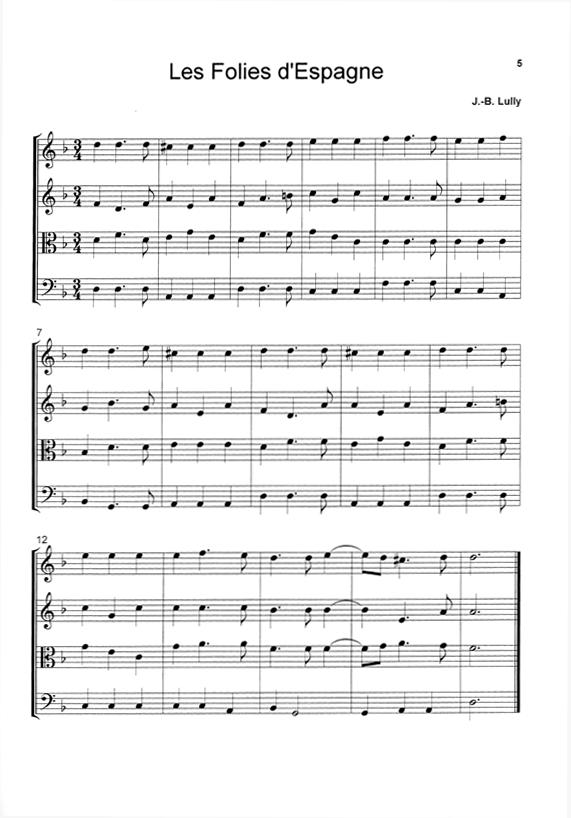


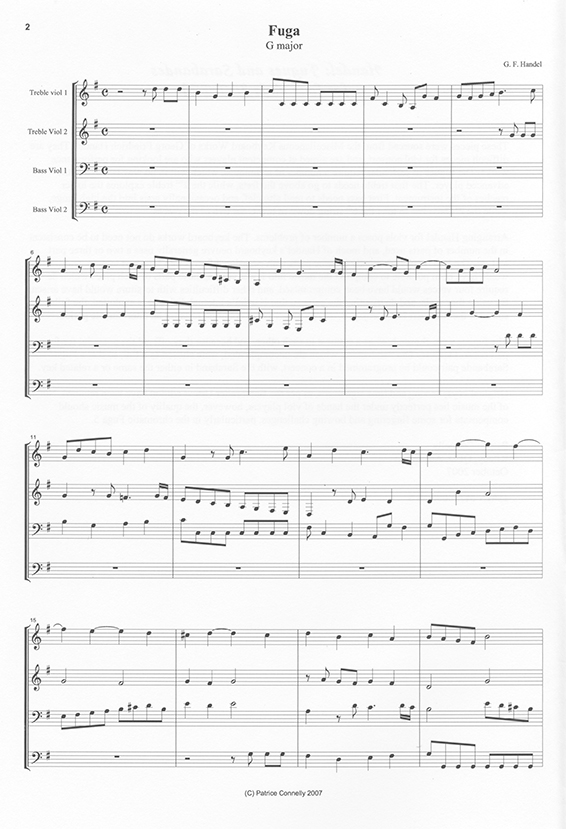
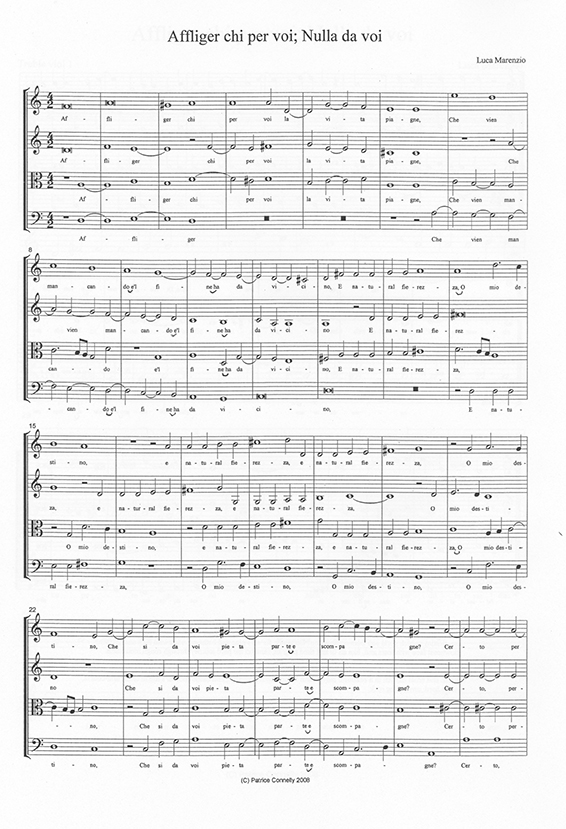






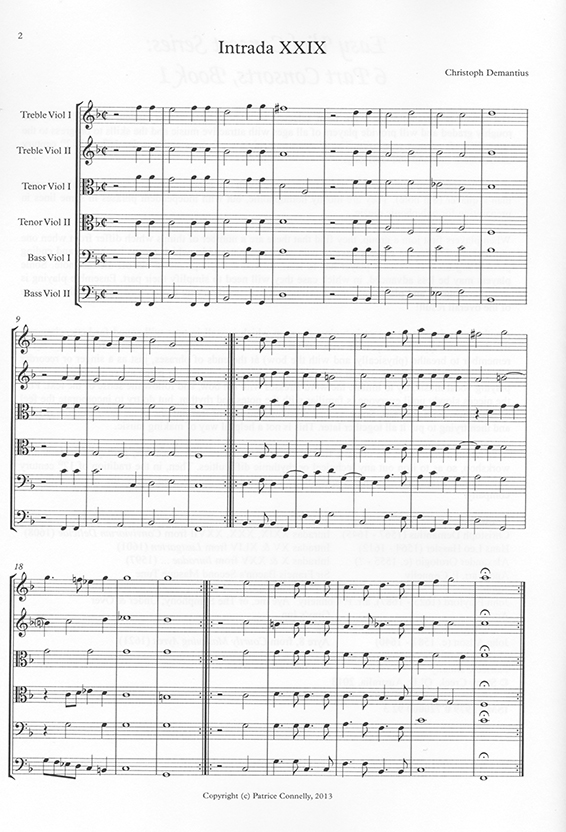





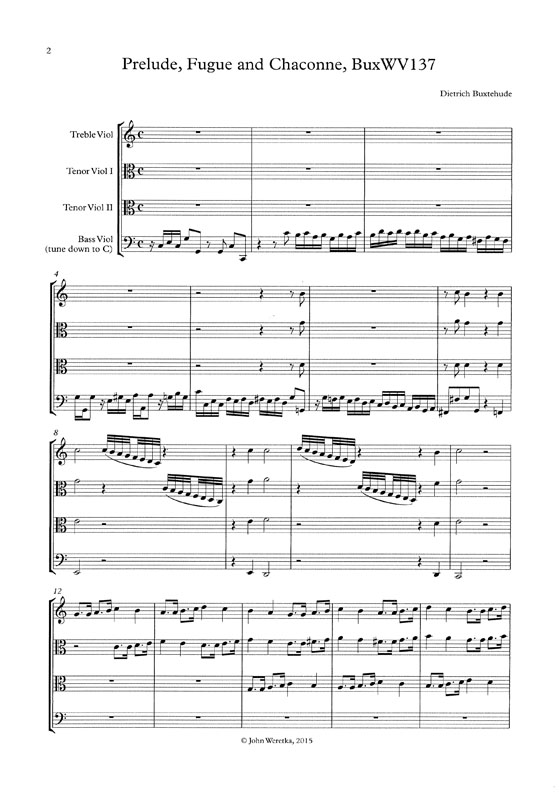



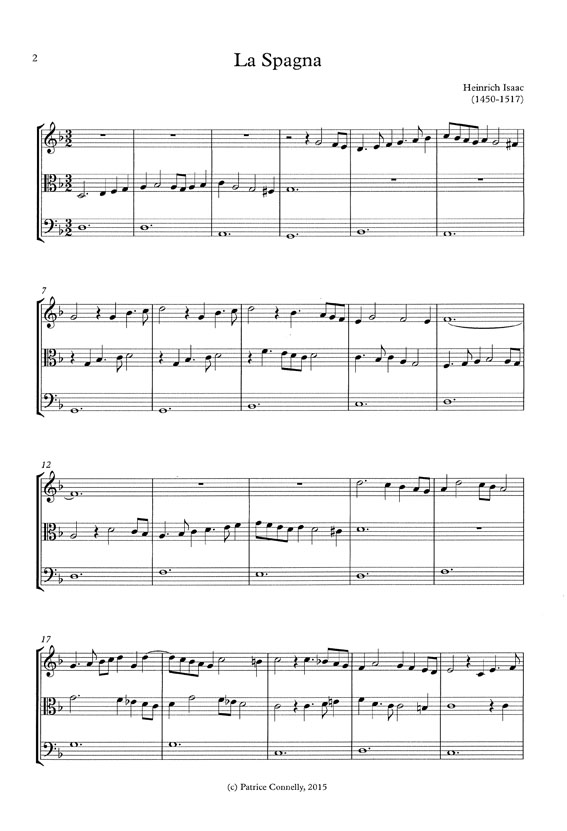






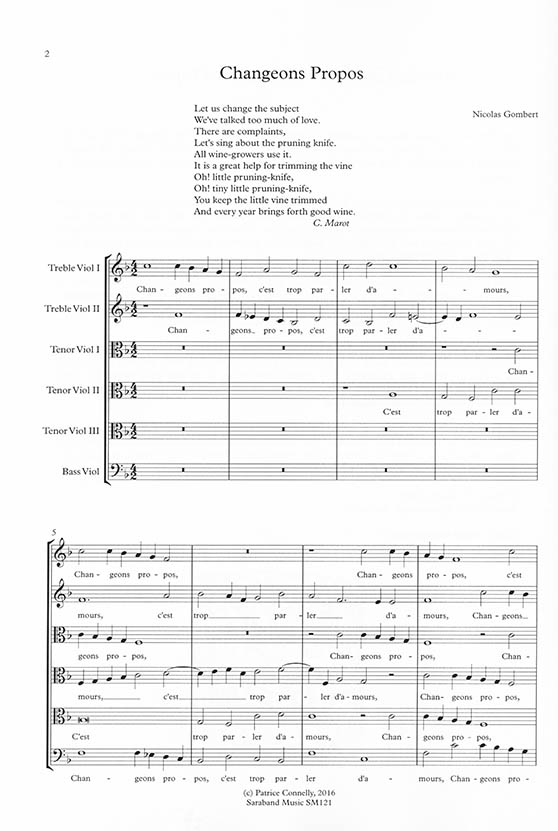

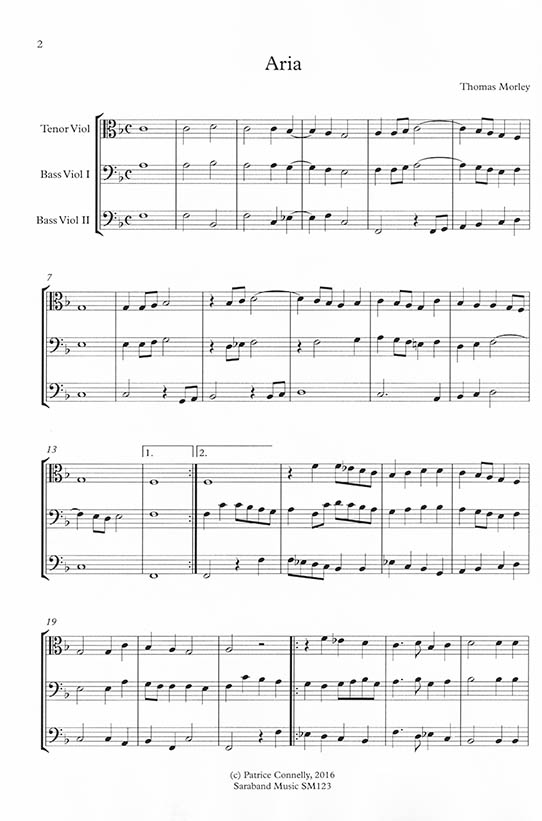
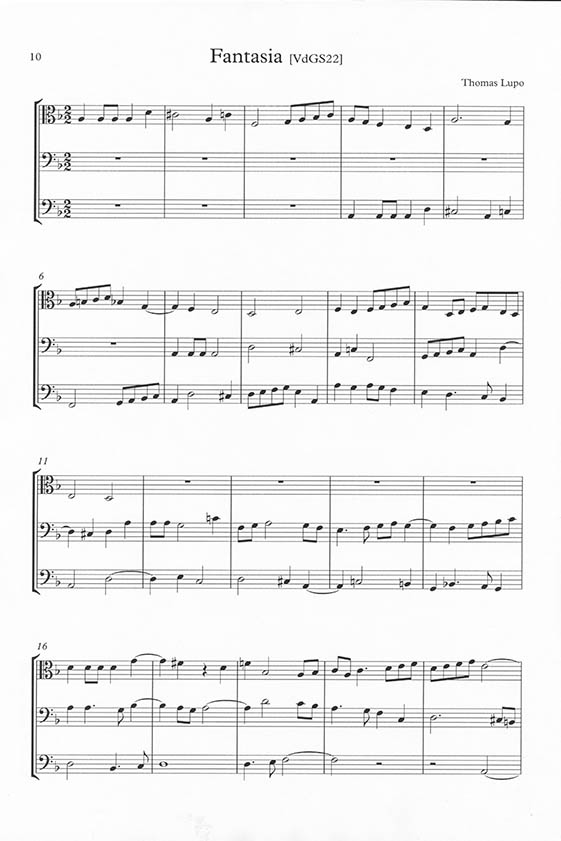






































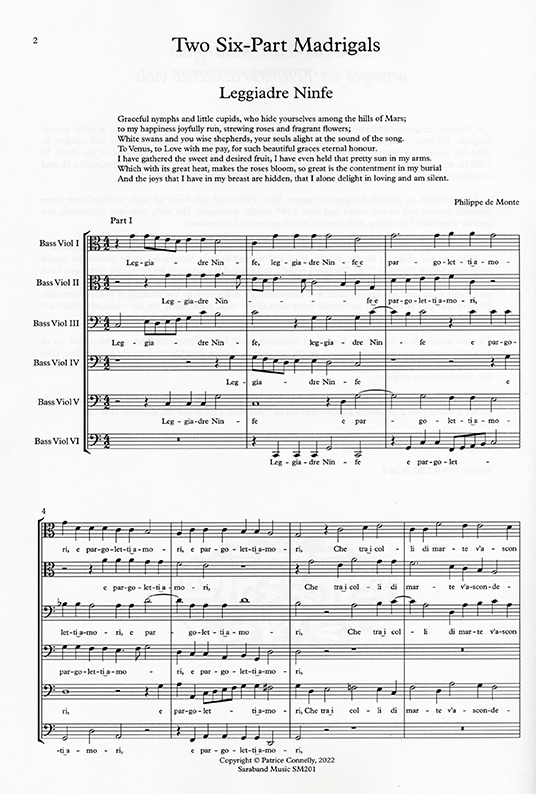


 .
.


